In November of 2015, I decided to quit my career as a software engineer at Amazon in Silicon Valley. And I went home to India to work on a startup idea.

Silicon Valley had been my dream place to live in. And building a startup was my dream job. And it had taken me 10 years to reach there. But, in just 2 years of living in the Valley, I realized that I would have to choose between my two dreams: either live in Silicon Valley and continue working for Amazon. Or return to India to work on my Startup.
Because, due to how the immigration system worked, I couldn’t work for my own startup while on an H1b visa. My other options were either to wait for 10+ years (as an Indian) to get a green card. Or build an MVP and secure funding to get an entrepreneur visa. I started building an MVP, by myself, during evenings and weekends while I was working at Amazon, but soon I came dangerously close to burning out.
I realized two important things regarding starting-up. One, that a startup is a team endeavor. Two, that it has to be a full-time thing.

Hence, I decided to quit and return to India. The first hurdle was convincing my father that it was really the best thing for me. That took me three months of Skype calls.
Finally, only one problem remained to be solved. What to do with my $400 mountain bike that I so loved. It was barely three months old.
Reading the terms and conditions on the Singapore Airlines website, I had gleefully discovered this line:
“Your sporting equipment — such as golf clubs, surfboards, canoes, skis, and bicycles — counts towards your free baggage allowance”.
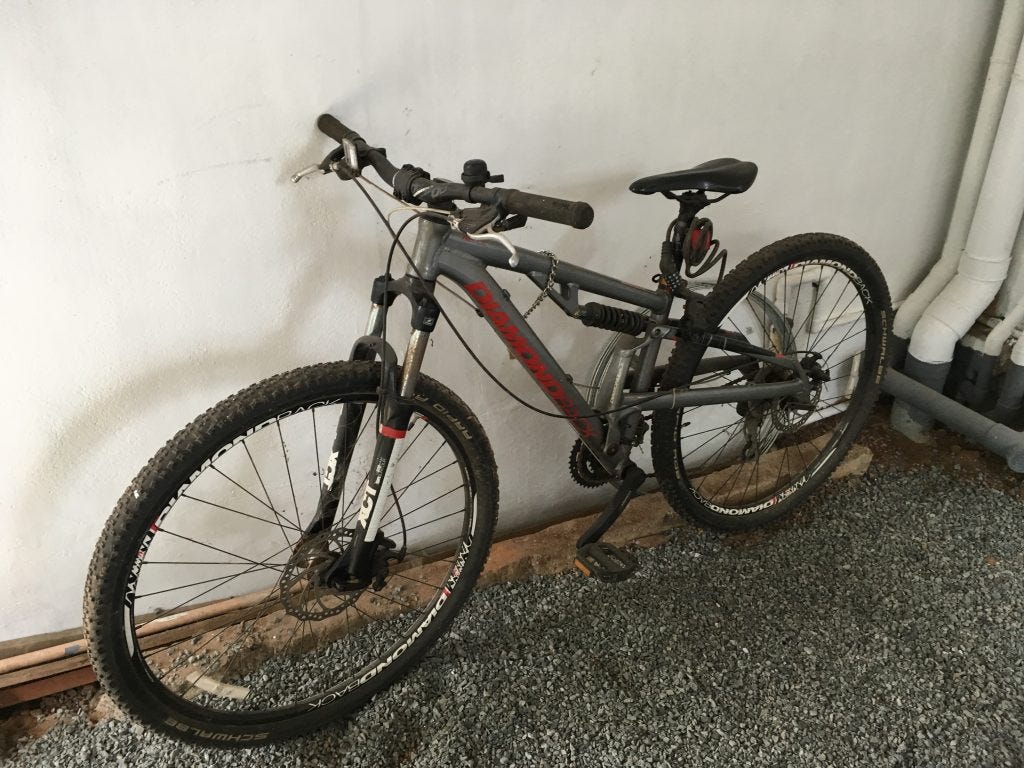
I walked my bicycle into the airport. At the check-in counter, I declared that I have two items: a suitcase and my mountain bike. The airline agent at the Singapore Airlines check-in counter briefly smiled before issuing my boarding pass. Twenty-two hours later, both I and my bike landed safely in Cochin International Airport in Kerala, India.
Just Begin. You solve one problem. Then you solve the next. And if you solve enough problems, you get to come home…
Mark Watney, The Martian (Movie)
Idea 1: Travel Concierge Chatbot
I pitched my friend CP to work on my startup idea: a Facebook Messenger chatbot to book flight tickets. He was a senior in college and used to work for Amazon in Seattle after his MBA. I also met two friends through my cousin. Gijo and Jovis were running a software consulting business at the time. They agreed to join the founding team. Six months after reaching India, our team made the first code commit.

We tied up with an existing travel agency to process our bookings. We also had to attend a software training for travel agents. This was very useful for us to learn first hand how the system worked. We finished building the software MVP in three months and we started booking flight tickets for people.

Soon, we were accepted by a popular Indian incubator program called NASSCOM 10K startups. We shifted our office space to the comfortable co-working space provided by NASSCOM in Infopark, an IT tech-park in Kerala.

The best part of getting into an incubator was that we got to avoid pointed questions from well-meaning relatives, things like, “When are you getting a real job?”. We got to go to a real “office” every day like regular software employees.
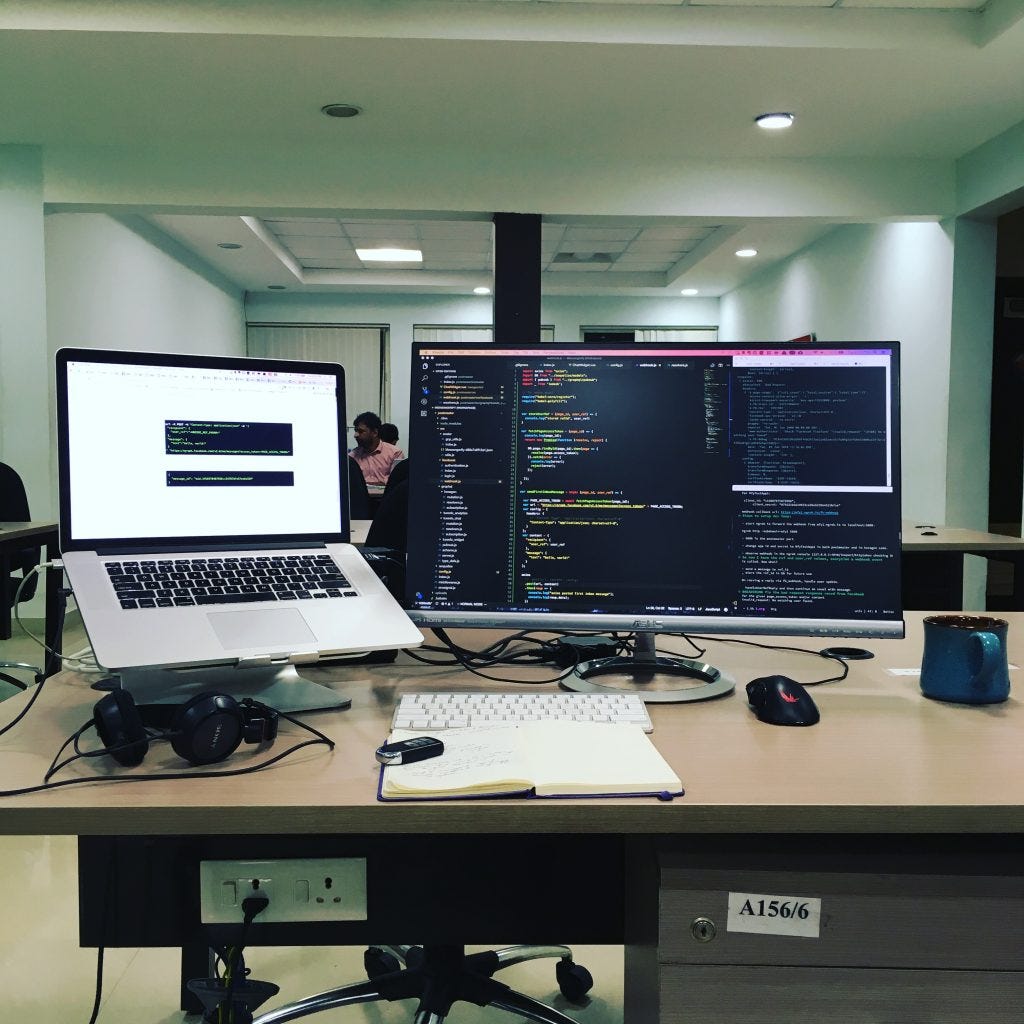
The First Pivot and the Business 101 lesson learned the hard way
Our customers really enjoyed the user experience of the concierge booking service via Messenger. But shortly we realized that they were more attracted to the initial discounts we were offering on tickets. We were doing this to get some early traction. We realized that the ticket margins are not enough to build a business on. I remembered the entrepreneurship class by Bret Waters I had attended in continuing education at Stanford. Bret had drilled the “Unit Economics formula” into our green ears:
To build a successful business of any scale, customer lifetime value should be greater than customer acquisition cost.Bret Waters, BUS 217 Stanford Continuing Education
We started brainstorming other ideas.
Idea 2: The RFQ marketplace
My co-founder CP pitched an idea of a hyperlocal marketplace for building materials that worked on a request-for-quote basis. Essentially for large bulk purchases of commodities, we set out to automate the price discovery process. We took care of creating Request-for-Quotes on behalf of our users and processing responses from vendors near the delivery location.
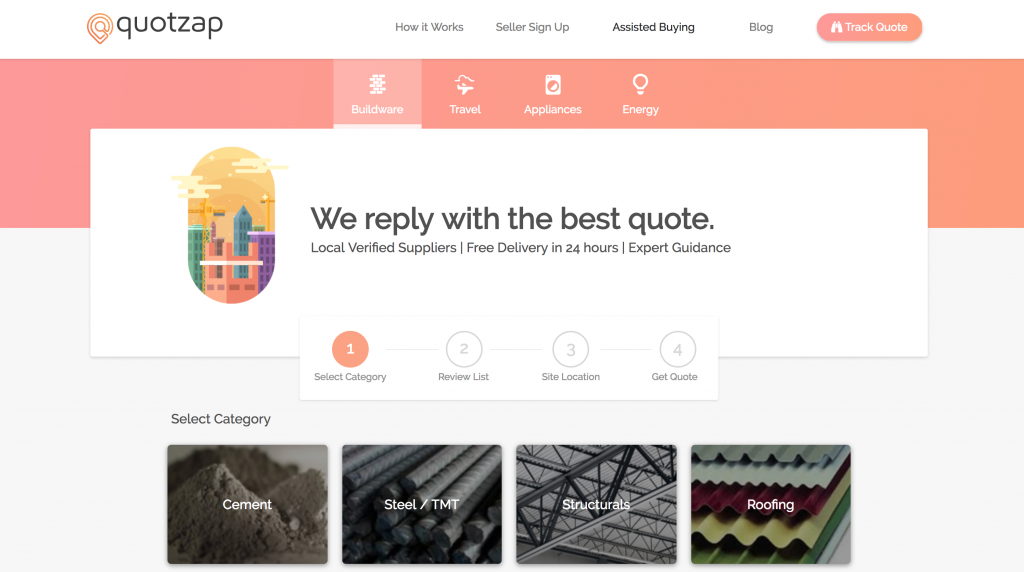
We built an MVP and went live in 2 weeks. In total, we sold Rs 2 million (gross merchandise value) worth of products through Quotzap. This time even though the margins were thin, the unit economics was positive. But we faced a customer engagement problem.
Visitors who came to our website would engage us in our chat widget. And they would leave their email-id for us to reply in case they left the website. The problem was that only 10% of follow-up emails we sent to the potential customers were opened.
Idea 3: The side project MVP that gained traction
One weekend, Gijo came up with an ingenious hack. We created a small widget for our website that could send one message (just one) to our Facebook Page.
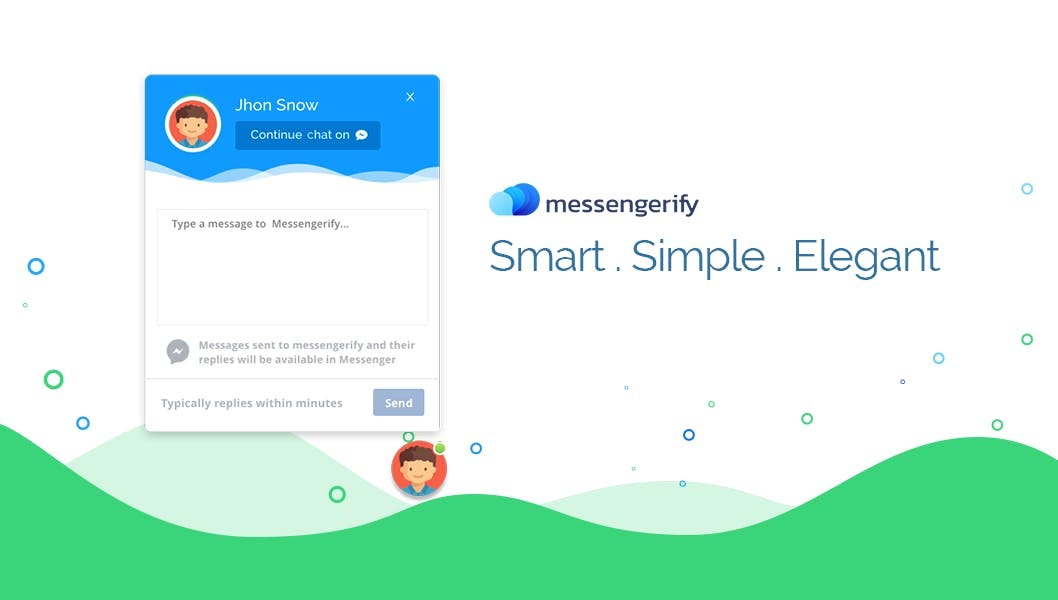
And once this conversation started on FB Messenger, even if the customer left the website, we could reply via Messenger. We saw an open rate of a whopping 80% and more than double the CTR than that on email. We shared this on some maker forums over the weekend and came back the next week to a pleasant surprise.
Learning what product-market-fit feels like
Messengerify was hunted on product hunt by Paco Escamilla (thank you Paco!) and was up-voted 816 times. We finished on the #4 position on Product Hunt that day.
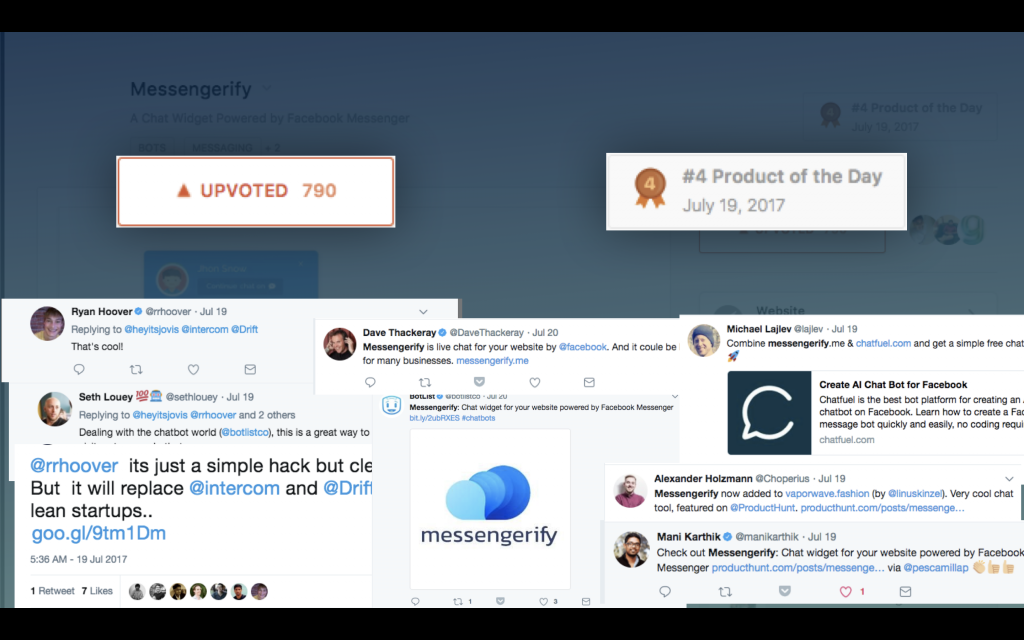
And our Paypal cash registers started ringing. And did not stop for the next three months. Even after doubling our price (as Patrick McKenzie advises) not once but four times! We made a grand total of $5560 dollars from our MVP in 3 months. This was more than what we made through Quotzap. It was then that we decided to pivot and build Messengerify full time.
One co-founder quits
Around this time, CP decided to pursue an opportunity in Health Tech. He decided that he could add more value in creating an enterprise product than in a pure software business. We parted as friends.
The second pivot and the lesson we learned about listening to customers
In March of 2018, we won a startup grant from Kerala Startup Mission. (which is the nodal agency for entrepreneurship of Kerala Government).
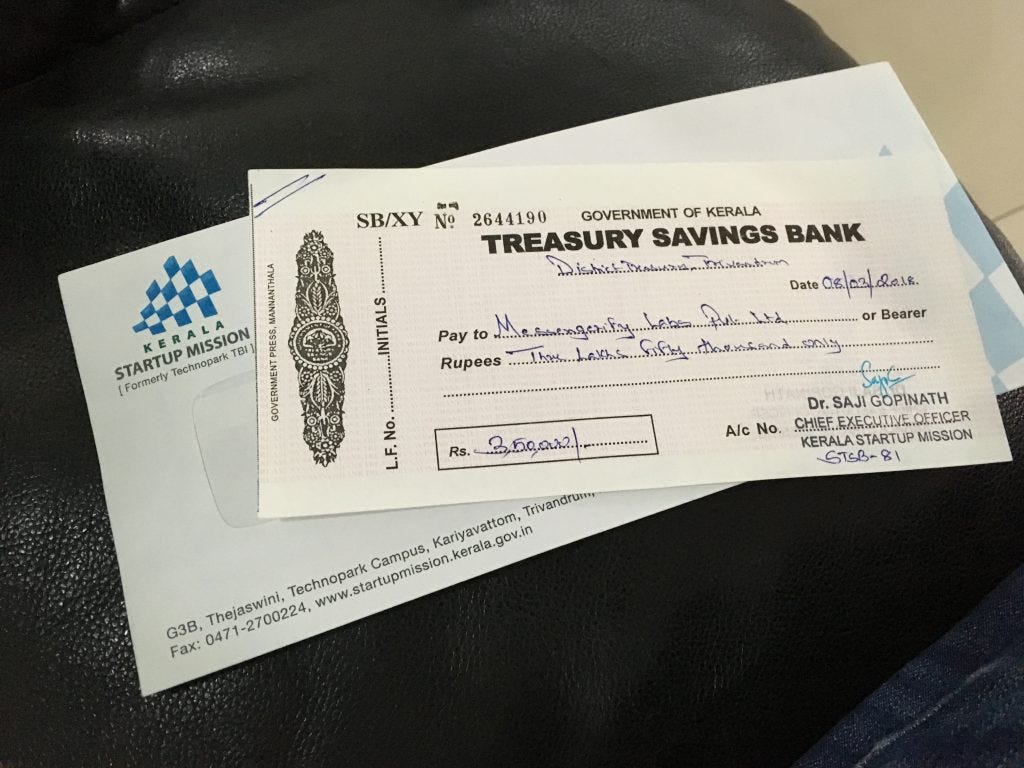
We decided to go ahead with our first engineering hire, Sujesh. And we accelerated the development of a full-fledged chat for websites. Since it integrates with FB Messenger, a business could continue the conversation with customers even after they left the website.
It took us six months of hard work. And around three months working with the Facebook team through the app review process. We finally went live in July 2018.
Facebook plays Sherlock
On product hunt, a community member, Oty had asked the following question:
What if Facebook comes tomorrow with a similar chat widget?
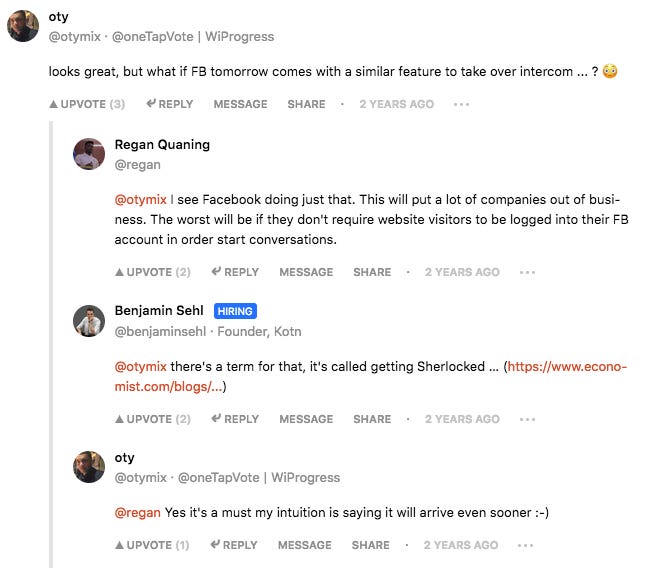
Turns out the Product Hunt community (@otymix, @regan, and @benjaminsehl) is incredibly foresighted.
Facebook soon launched the beta of their chat widget plugin for websites.
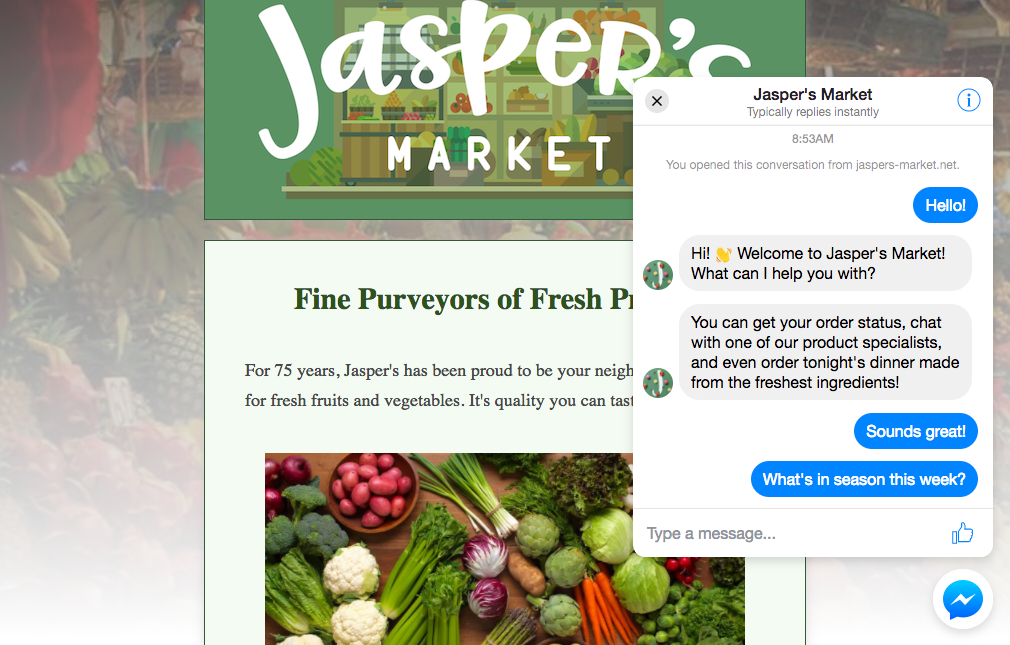
The Economist had a term to describe this type of situation.
THE thing software developers fear most is being “Sherlocked”.

Despair, Frustration, and then a Revelation
After talking to customers we realized that what they really wanted was something similar to MailChimp for FB Messenger. They wanted a way to create Facebook Messenger Campaigns. All the code for our sophisticated web socket based live chat servers had to be thrown away.
Customers wanted a better way to communicate with subscribers in a personalized but at scalable! And one-on-one chat was not really scalable.
We resolved to begin again. And wiser from our mistake, we sought out to listen to customers before writing the first line of code.
MFY: The new beginning
Luckily around this time Mani Karthik, a highly influential pro blogger offered to mentor us. He had been following us since the launch of our MVP on Product Hunt. He was an ideal customer too. We decided to create a FB Messenger campaign product specifically for online creators just like Mani Karthik.
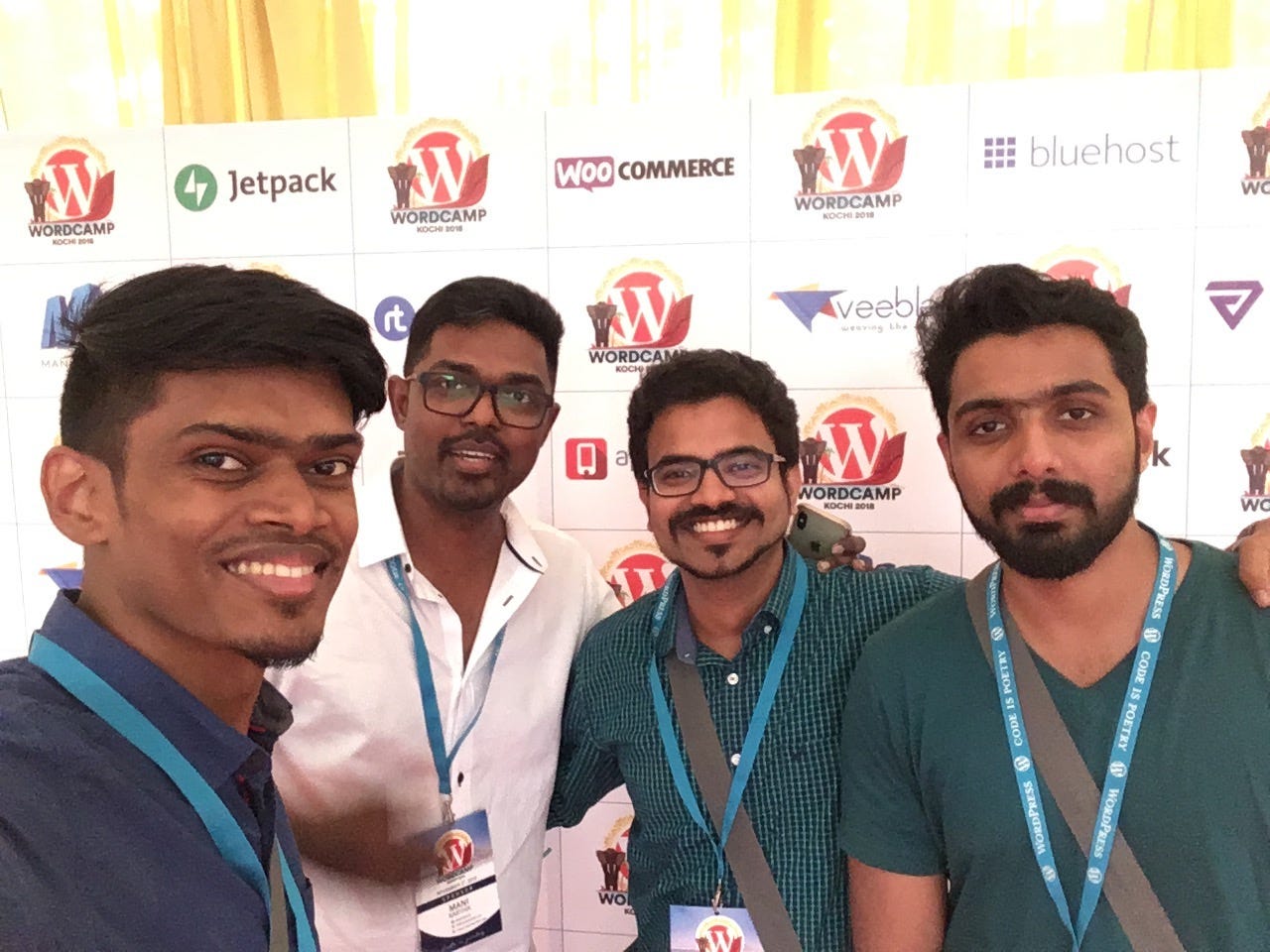
Learning from mentors and growing the team
We rebranded Messengerify to MFY for a fresh start. Also, we decided to position ourselves as a marketing platform than as a customer chat support tool. We had endless discussions with Mani on what features should be prioritized. We wrote our first line of code only after much deliberation.

Three more new engineers joined the team, 2 of them women. We learned to be mindful of our team culture to create a friendly and productive work environment.
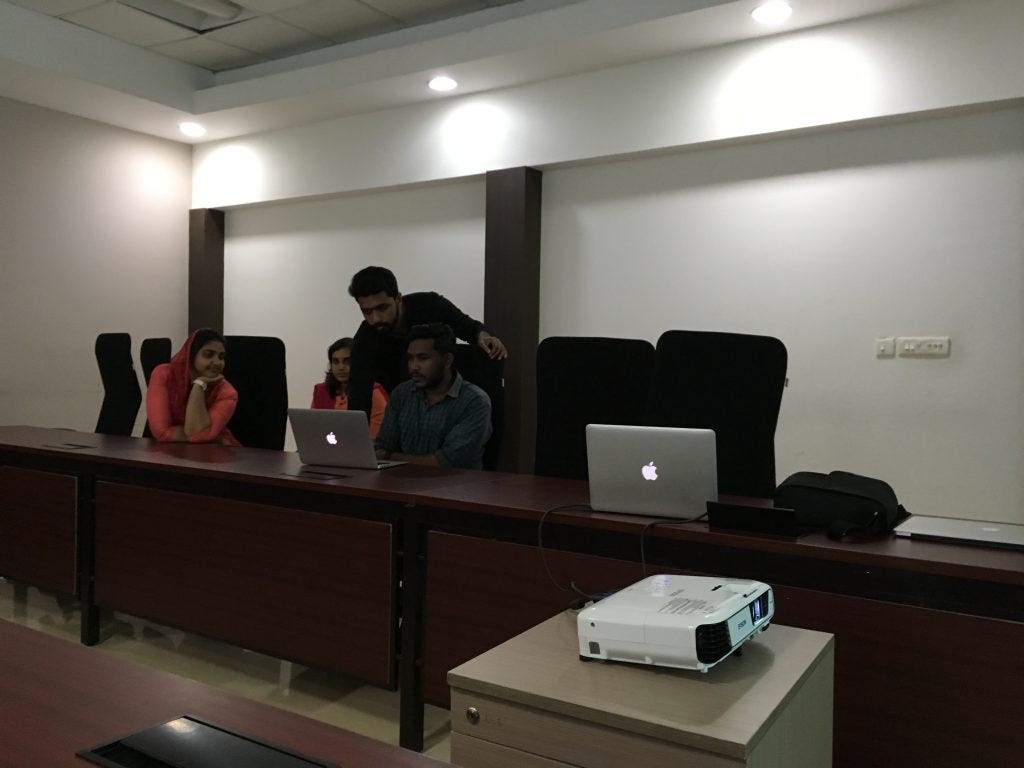
Idea 3, Version 3
Finally, in December 2018, we re-launched as MFY, the FB Messenger marketing tool for online creators. We reached out to creators and professional bloggers who could give us valuable feedback. Many graciously responded. Harsh Agarwal of Shout Me Loud gave us a lot of specific pointers (thank you Harsh!!).
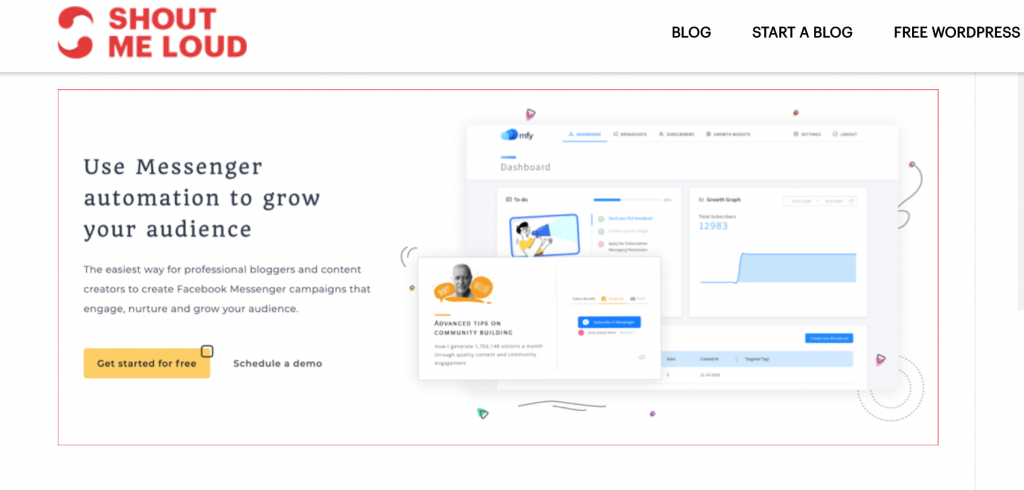
Foti Panagio of GrowthMentor met with us twice on Skype and gave us in-depth suggestions. Mani Karthik kept mentoring us all throughout. Can’t thank you guys enough!

Some of the customers who started working with us include a car company, an ayurvedic resort, a cloud kitchen startup, an event marketing company in Dubai, and a sports news outlet called SportsMalayalam.
We learned that businesses of all kind, online and offline, are keen to use social messengers to reach consumers. But, we decided to continue to focus on online creators and professional bloggers. Because we feel we understand them as a customer group than anyone else at this point.
The A/B test that course-corrected our roadmap
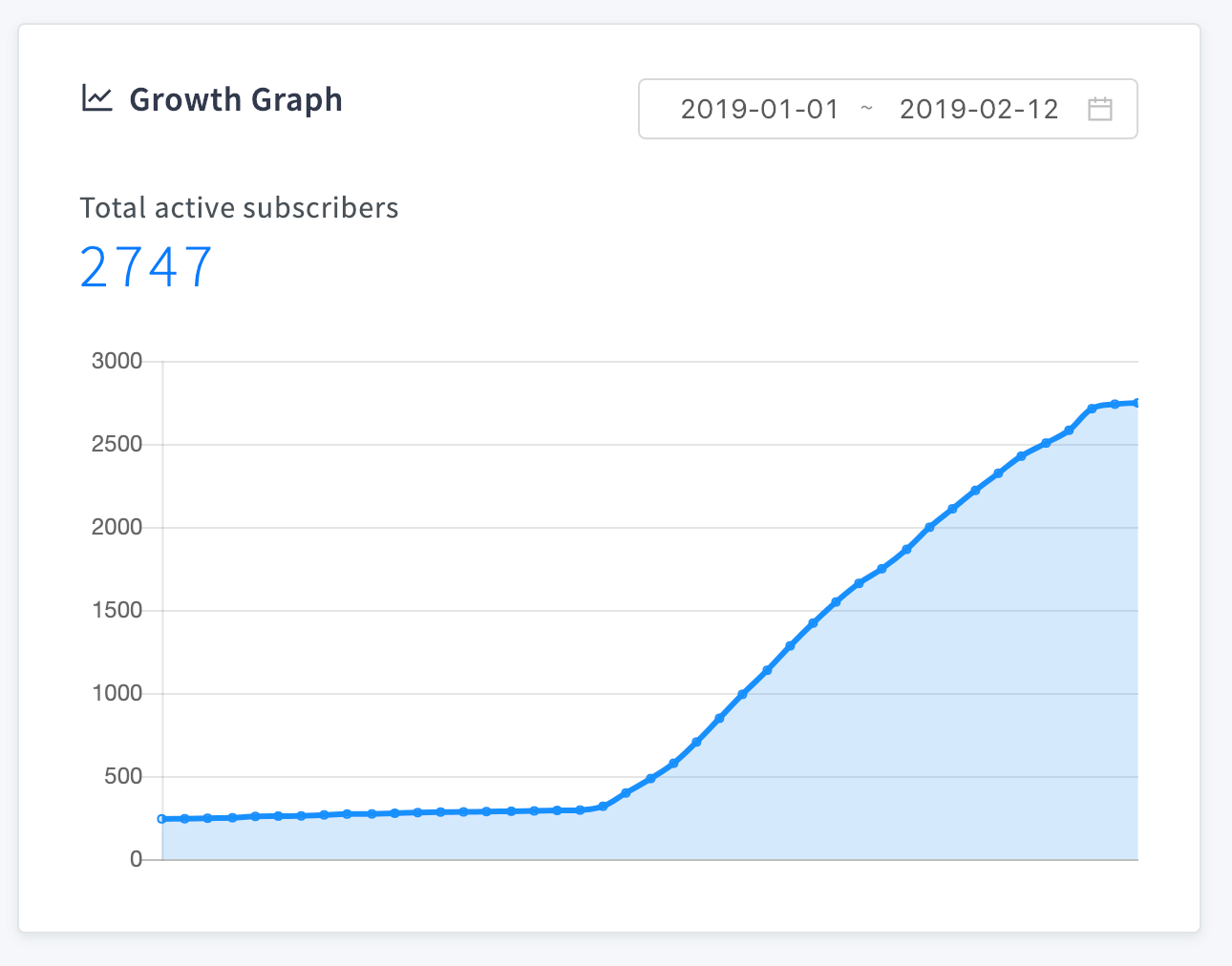
One week, we experimented with adding Facebook’s chat widget to a website. Mani Karthik added FB Messenger on his blog. We picked a SportsMalayalm which did not add this widget (since they didn’t have resources to chat with their visitors) to compare results. On Mani Karthik’s website, the subscriber count climbed steeply while SportsMalayalam’s saw slower growth.
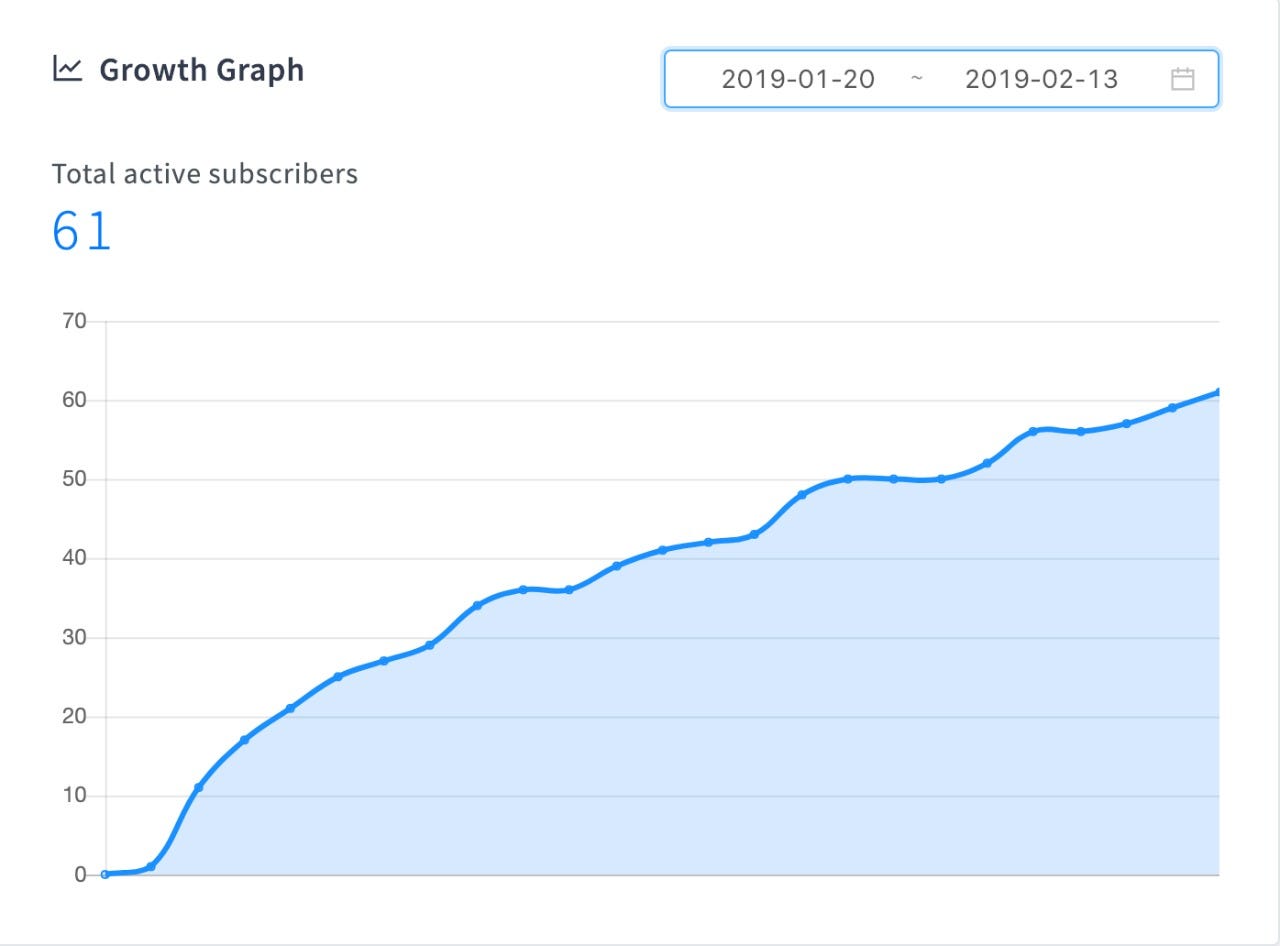
SportsMalayalam’s subscriber growth was less steep.
Idea 3, Version 4
For customers like SportsMalayalam, we decided to build a new growth tool called Corner Widget, taking inspiration from our very first MVP that could send just one message.

This is in addition to our existing Subscription Box and Lead-Gen Link growth widgets.
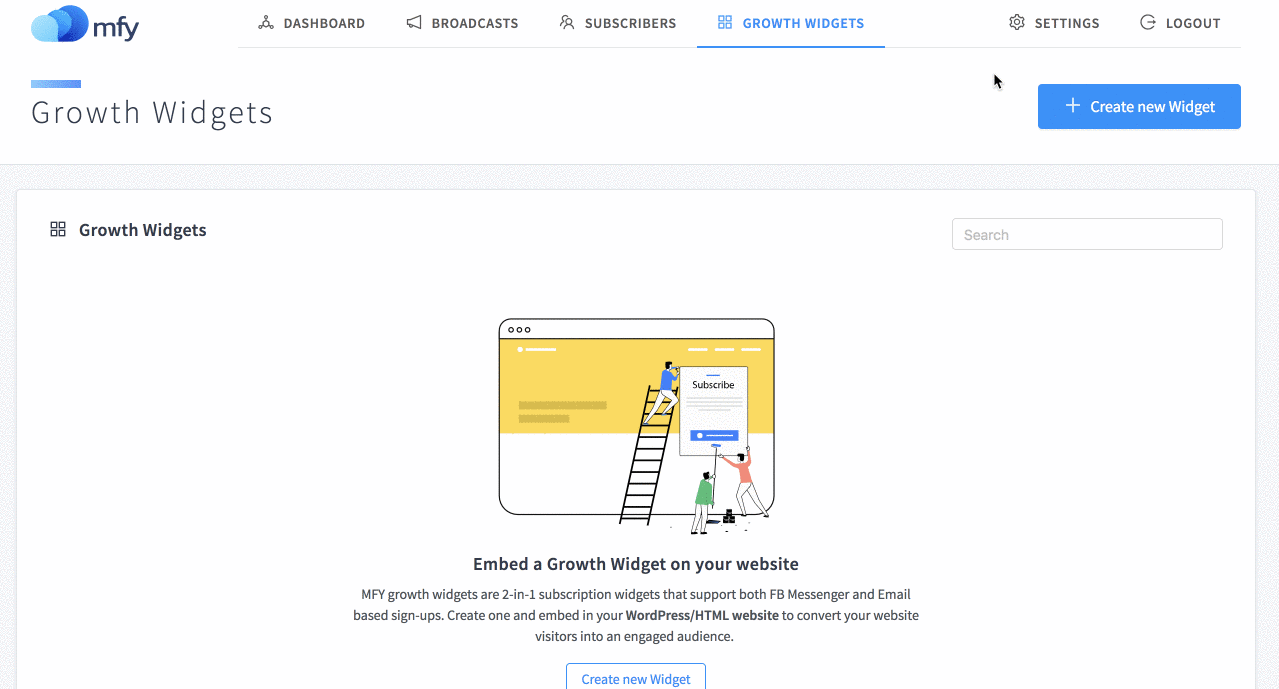
Also, based on feedback from Mani Karthik and Harsh, we decided that automated sequences of messages (aka campaigns) is a feature that is needed from day 1. So we decided to build these two features before we do a full launch. Our plan is to launch this v4 version on Product Hunt in early March 2019.

Facebook Messenger sequences (campaigns) in MFY.
Launched on Product Hunt! (and trending in the top)🤩👇
Please visit the Product Hunt for joining the discussion! Would love your feedback.
As we currently stand, we have 178 customers serving 3000+ subscribers through the MFY platform within one month of launching. Eight of them have added their credit cards after their free trials. And one of them is currently on the second largest subscription plan we offer, our first paid customer.
And for us, that smallest of the silver lining is keeping us grounded and focussed on building this SaaS business.
Like Gabriel Weinberg and Justin Mares says in the Traction book,
“Traction Trumps Everything” . — Traction Book
(Follow me on twitter to know how our story plays out in 2019).
Originally published at salemaker.co on February 12, 2019.

It takes courage to leave behind such a posh job and country for pursuing dreams. And we have way more to go !!!
Really happy to be a part of this journey (myself i'm a co-founder of MFY). From this journey what I learned the most is that the willingness to adapt according to what the market requires is what makes or breaks a startup.
Great story 👏👏👏
From the last couple of years, I learnt a lot, from ticket booking to brick and mortar!
Happy to be a part of your journey 🙂
Great Story 👏👏 it's not easy to convince your parents to quit your job at amazon and start a startup
Thanks for sharing Arun! Congrats on your journey and 🤞🤞🤞
Great article!!! Bravo to you and sooo much courage on all fronts. Wish you all the success!
Thank you! :)
That's a genuinely inspirational journey Arun. That's a very commendable journey you are on. The vigour and passion for building solutions itself is something worth lauding. Well, may 2019 give you a lot of learning with a ton a lot of cash from your sales. Good luck with your journey.
I have a specific question to ask; you said that you are going to concentrate on online creators and professional bloggers as customer base to build your product. Can you define the kind of online creators for whom your product would be beneficial. A few cases of application would be exceptional to understand.
Bloggers, for instance, can use MFY growth tools to let visitors subscribe for newer blog posts which can be broadcast to the audience in Messenger. 80% of open rates means more returning readers for the blog
Similar goes for Youtube video creators to send updates on their newest videos
For online course creators, sending parts of course as a FB Messenger campaigns is a better way to improve course completion rates and to keep students engaged
People who create unique products and sell on Etsy or Shopify or Instagram can use FB Messenger to send updates on new catalogue of products or run referral campaigns or send discount codes to subscribers to prevent cart abandonment scenarios.
This comment was deleted 5 years ago.